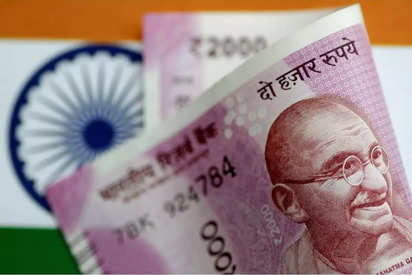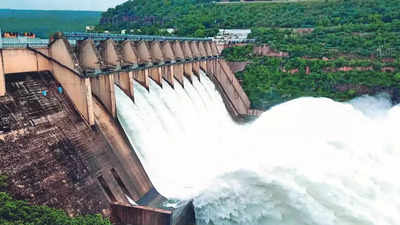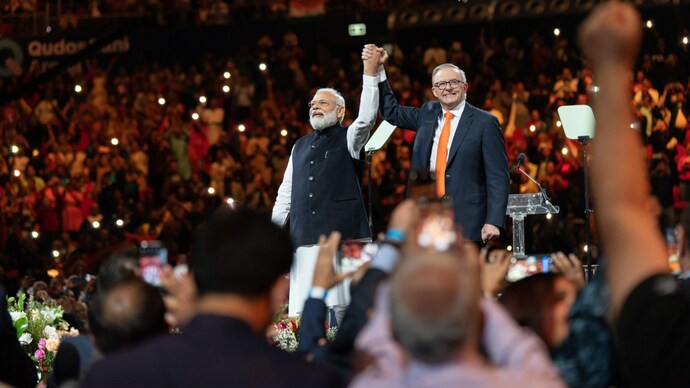When discussing the value of a currency, the emphasis is frequently on its exchange rate and purchasing power. However, a more fundamental consideration is citizens’ trust in its acceptance and stability as a medium of trade and store of value. This trust is profoundly based in the belief in central banks, such as the Reserve Bank of India (RBI).
The rationale for withdrawing 2,000 notes from circulation while maintaining them legal tender
- Clean Note Policy: The pullout is part of the RBI’s initiative to establish a more environmentally friendly currency system. The RBI hopes to improve the general quality of money in circulation by encouraging the exchange of soiled or damaged notes.
- Curbing Black Money: The decision is intended to reduce black money hoarding, as bigger denomination notes are frequently associated with illegal activity. The RBI seeks to discourage the buildup of unaccounted riches by banning the use of 2,000 notes.
- Enhancing Transparency: The withdrawal is expected to improve financial transaction transparency. The RBI hopes to stimulate a move towards digital payments and traceable transactions by limiting the availability of high-value currencies.
- Counterfeit Concerns: The withdrawal may assist in mitigating the hazards associated with counterfeit cash. High-denomination notes are frequently targeted by counterfeiters, and by withholding 2,000 notes, the RBI hopes to combat counterfeiting and preserve the currency’s integrity.
- Managing cash Supply: The withdrawal enables the RBI to better manage cash supply and circulation. The RBI can assure appropriate availability of notes for day-to-day transactions by gradually replacing 2,000 notes with lower denomination money.
- Aligning with the Majority: The decision is based on the observation that the vast majority of transactions in India involve lesser monetary values. The RBI intends to match the currency with the needs of the majority of the population by withdrawing 2,000 notes, which are primarily used for high-value transactions.
The Potential Impact of this Change on Business and the Economy
- Uncertainty and Business Attitudes: The withdrawal of 2,000 notes may cause business concern, as unexpected changes in the currency system can impede economic activity. This uncertainty can have an impact on corporate sentiment and decision-making, potentially leading to a more conservative approach to investments and expansion plans.
- Sectors that rely on cash: Certain industries that rely significantly on cash transactions, such as small enterprises, informal sectors, and rural areas, may struggle to adjust to the withdrawal. The availability of lesser denomination notes to replace 2,000 notes, as well as the requirement for individuals to exchange their old notes, might cause temporary disruptions in cash flow in various industries.
- Adoption of Digital Payment Methods: As the supply of high-value currency decreases, there may be a drive for higher adoption of digital payment methods. As consumers and organisations seek alternatives to cash transactions, the withdrawal has the potential to accelerate the ongoing shift towards digital transactions.
- Impact on Consumption: The withdrawal may have an impact on consumer purchasing habits. Individuals’ spending behaviour may be affected if they perceive a lack of high-value currency, especially for larger expenditures. This could decrease consumer demand in the short term and have an impact on particular sectors of the economy, such as real estate and luxury products.
- Counterfeit and Black Money: The withdrawal of 2,000 notes attempts to combat counterfeiting and reduce black money hoarding. If effective, it can help to improve the currency’s integrity and promote a more transparent financial system. The actual impact on removing black money and counterfeit cash, however, will be determined by the success of enforcement efforts and the adoption of alternate forms of illicit transactions.
- Financial Inclusion: Individuals with restricted access to financial services or digital payment infrastructure may face difficulties as a result of the withdrawal. Efforts will be required to ensure that the transition does not impede financial inclusion and that vulnerable sectors of the population receive enough support.
Concerns and debates about the central bank’s reputation
- Demonetization Fallout: The execution of demonetization in 2016, which resulted in the invalidation of high-value currency notes, elicited diverse reactions. Critics believe that the RBI’s involvement in decision-making and execution generated concerns about the central bank’s independence and ability to successfully administer the country’s monetary policy.
- Inflation manage: The major mandate of the RBI is to maintain price stability and manage inflation. However, the central bank has had difficulty regularly meeting its inflation targets. Critics argue that the RBI’s monetary policy framework and communication techniques may be changed to ensure better alignment with its objectives and to improve the bank’s reputation in inflation management.
- Oversight of the Banking Sector: The RBI is in charge of overseeing the banking sector and ensuring financial stability. Some say that the central bank should have been more aggressive in discovering and addressing issues linked to non-performing assets (NPAs) and bank health. Concerns have been expressed concerning the efficiency of the RBI’s regulatory monitoring due to apparent delays in implementing corrective actions and addressing governance flaws.
- Communication and Transparency: The RBI’s communication and transparency have been criticised. Critics say that the central bank’s communication techniques may be improved to ensure clearer and more consistent communications about policy actions and their aims.
- Autonomy and Independence: The RBI’s reputation is mainly based on its independence and autonomy from extraneous influences. Concerns have been expressed about potential threats to the central bank’s independence, such as the use of certain clauses of the RBI Act and discussions about the RBI’s relationship with the government. The RBI’s autonomy is viewed as critical to the institution’s reputation as credible and independent.
What steps should the RBI take to recover and sustain its reputation?
- Transparency and communication should be prioritised by the RBI in its operations and decision-making process. It should communicate policy decisions, objectives, and the reasoning behind its actions in a clear and timely manner. Regular and effective communication can serve to increase public trust and knowledge of the RBI’s role in ensuring a stable and resilient financial system.
- Autonomy and Independence: The RBI should emphasise its independence from political meddling. It should make certain that its decision-making process is free of extraneous influences and is founded on sound economic principles. Maintaining its independence maintains the RBI’s reputation as a credible and trustworthy organisation.
- Consistency and predictability: A clear and consistent approach to monetary policy, regulation, and supervision promotes financial system stability and confidence. Avoiding abrupt policy adjustments or reversals can help the RBI’s reputation for smart decision-making.
- Accountability and Oversight: The RBI should put in place strong accountability and oversight measures. Effective internal controls, external audits, and adequate checks and balances are in place to ensure that the RBI’s policies and actions are in line with its mandate and serve the best interests of the economy. Accountability contributes to public trust in the RBI’s operations.
- Economic Stability and Financial Inclusion: The RBI should prioritise its duty of fostering financial inclusion while ensuring economic stability. The RBI may contribute to sustainable economic growth and minimise income inequality by executing effective monetary policies, regulating inflation, and guaranteeing a resilient financial system.
- Continuous Learning and adaptability: The RBI should place a premium on ongoing learning, research, and adaptability to changing economic and financial difficulties. The RBI will be able to improve its efficacy and credibility as a forward-thinking organisation by being educated about global best practises, monitoring developing risks, and proactively tackling new difficulties.
@the end
The Reserve Bank of India’s (RBI) recent acts, especially the withdrawal of the 2,000 note and the aftermath of the 2016 demonetization, have called into question the RBI’s judgement and capacity to maintain public trust. The RBI can safeguard the value of the rupee and promote financial system stability by aligning its actions with the long-term objectives of the Indian economy. Only then will the RBI be able to reclaim its credibility and fulfil its function as a reliable and effective central bank.
Source: https://economictimes.indiatimes.com/markets/rbi






